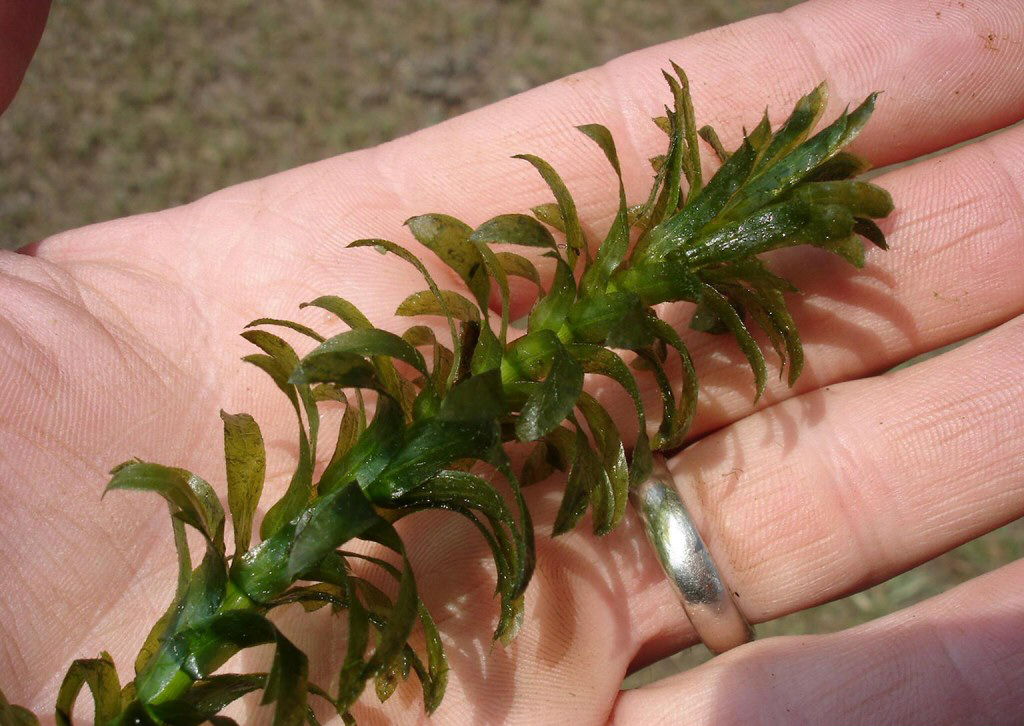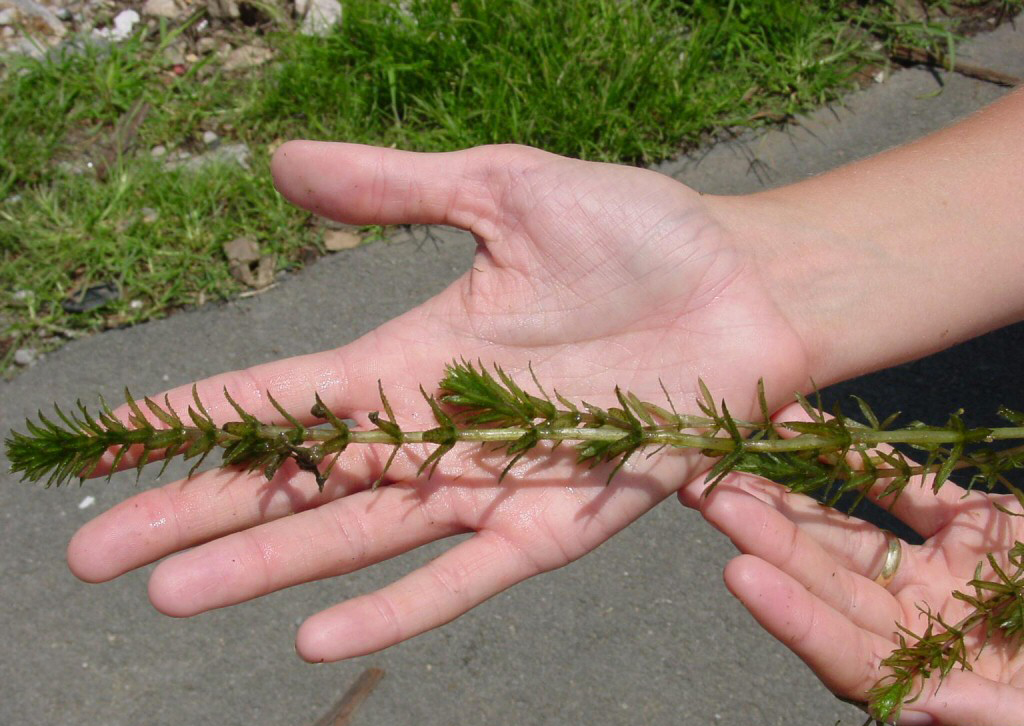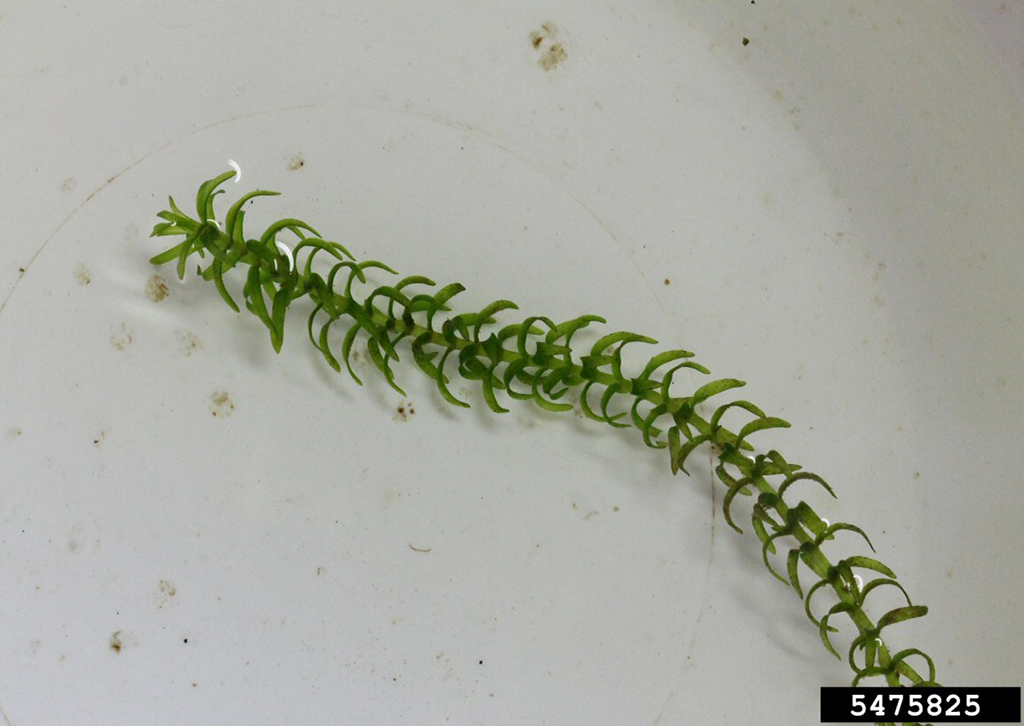What is Ontario Doing?
To prevent this unwanted invader from coming into the province, Ontario has regulated Brazilian elodea as prohibited under the Invasive Species Act, 2015. For more information on the Invasive Species Act and Regulations, visit www.ontario.ca/invasionON.
Background
Brazilian elodea, also known as Brazilian waterweed, is a submerged aquatic plant in the waterweed (Elodea) family. It can be found in a wide range of freshwater habitat types, including wetlands, lakes, ponds, and even slow-flowing streams. While it is usually rooted at depths of 1-2 m, it can be found in up to 6 m of water, and can also drift freely. Optimal temperatures for growth are 16-20°C, but it also has the ability to overwinter under the ice. In its introduced range, this species displays vegetative reproduction only, meaning that small fragments break off to form new plants. Because of this, it can spread quickly. This species has become a popular aquarium and water garden plant, often sold under the alias “Anacharis”.
Range
The native range of Brazilian elodea is in South America (central Minas Gerais region of Brazil, coast of Argentina, and coast of Uruguay). However, owing to its popularity in the aquarium and water garden trade, it has been successfully introduced throughout parts of Europe, Asia, Central America, and Mexico, as well as in at least 34 American states. It is not yet documented in Ontario, but has established populations in the Great Lakes basin, including in Illinois, Indiana, New York, and Pennsylvania.
For an up to date distribution map of Brazilian elodea in North America, visit www.EDDMapS.org/distribution.
Impacts of Brazilian Elodea
Once introduced, Brazilian elodea can have significant impacts on aquatic ecosystems, including:
- It rapidly forms dense mats on the surface of the water that can restrict water movement, increase sedimentation, affect water quality, and crowd out native plant species.
- Changes water quality, such as lowering water temperature and reducing oxygen concentrations, reducing nutrient availability while growing, as well as eutrophication (nutrient overloading) when the plant decomposes.
- Ecosystem impacts include the smothering of native plant seeds through sedimentation and changes to native fish populations through reduced habitat quality.
- Thick mats of Brazilian elodea can also impede several recreational activities, such as boating, fishing, and swimming and can even clog infrastructure and water supply intakes.
How to Identify Brazilian Elodea
- Often confused with Hydrilla, another invasive species in the US and prohibited under the ISA, 2015.
- Is more likely to be confused with the native aquatic plant, Canada Waterweed (Elodea canadensis).
- Plant grows submerged in depths ranging from 1-2 m (3.3-6.6 ft), but can grow in depths up to 6 m (19.7 ft).
- Stems are thin (1 – 3 mm (0.04 – 0.12 in) in diameter) upright, cylindrical, simple or branched, and grow to the surface of the water forming dense mats.
- Leaves are 1 – 3 cm (0.4 – 1.2 in) long, up to 5 mm (0.2 in) broad, and found in whorls of 4 to 8.
- Leaves and stems are generally bright green and the short internodes give it a very leafy appearance.
- Brazilian elodea has small flowers with three white petals that stick out approximately 2 cm (0.8 in) above the surface of the water, once they open.
Similar Species
INVASIVE
Brazillian Elodea
(Egeria densa)
Details
- Four to six leaves in a whorl.
- Minutely toothed leaf edges are only visible if magnified.
- No prickly hairs on underside of leaf.
- Up to 4 cm (1.6 in) long.
- No tubers.
INVASIVE
Hydrilla
(Hydrilla verticillata)
Details
- Three to eight leaves in a whorl.
- Prominent sharp teeth on leaf edges.
- Prickly hairs on underside of leaf.
- 1 – 2 cm (0.4 – 0.8 in) long.
- Small white potato-like tubers can form on stem ends.
What You Can Do
- Learn how to identify Brazilian elodea and how to prevent the introduction or spread of this plant with your watercraft or fishing equipment.
- Never buy, plant, or keep Brazilian elodea in your aquarium or water garden. It is against the law to buy, sell, trade, possess, or transport Brazilian elodea.
- Never deposit unwanted aquarium or water garden plants into Ontario lakes or rivers. Dispose of them in the garbage or away from any waterbody.
- Clean, Drain, Dry your boat, trailer, and equipment after each use. Remove all plants, animals, and mud before moving to a new waterbody.
- If you have any information about the illegal importation, distribution, or sale of Brazilian elodea, report it immediately to the MNRF at 1-877-847-7667, toll-free anytime. You can also call Crime Stoppers anonymously at 1-800-222-TIPS (8477).
- If you’ve seen Brazilian elodea or another invasive species in the wild, please contact the toll free Invading Species Hotline at 1-800-563-7711, visit EDDMapS, or search for the ‘Invasive Species in Ontario’ project on iNaturalist.org to report a sighting.
Resource Files
Gallery
OFAH/OMNRF Invading Species Awareness Program. (2021). Brazilian Elodea. Retrieved from: www.invadingspecies.com.
This factsheet may be reproduced for non-commercial purposes.
Header photo by Robert Vidéki, Doronicum Kft., Bugwood.org





